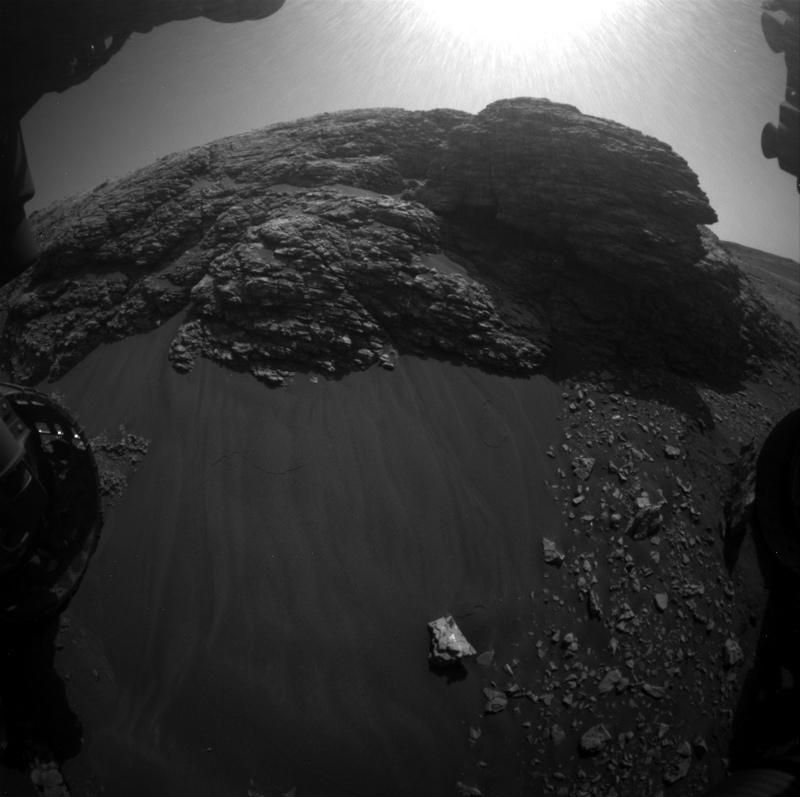2 min read

The short drive or "bump" that was planned for Sol 2924 went well, placing the rover on a relatively steep slope right next to the "Maybole" outcrop.
Every time we prepare to deploy MSL's arm, the risk of the wheels slipping due to the change in the vehicle's center of gravity must be assessed. Today that assessment was more difficult than usual because of the ~26-degree rover tilt and the proximity of the outcrop, making it a challenging day for the tactical team and a sometimes stressful one for me as SOWG Chair. But ultimately we got the "go" from the experts assessing the slip risk, and we did not have to remove any arm activities from the plan.
Before the arm will be deployed on Sol 2925, Navcam will search for dust devils and Mastcam and Navcam will measure the opacity of dust in the atmosphere. Then ChemCam will measure the elemental chemistry of targets dubbed "Bister" and "Fittie" and the Right Mastcam will take documentary images of both ChemCam targets. Mastcam will then acquire a 3 x 1 stereo mosaic of a small crater named "Crubba" before the rover takes a brief nap. Later in the afternoon, MAHLI will acquire a full suite of images of the outcrop target "Bablin" before the APXS is placed near that target for a short evening integration. APXS will then be placed directly on the Bablin target for a long, overnight integration, during which CheMin will return data from its most recent measurement of the "Groken" drill sample.
Written by Ken Herkenhoff, Planetary Geologist at USGS Astrogeology Science Center







